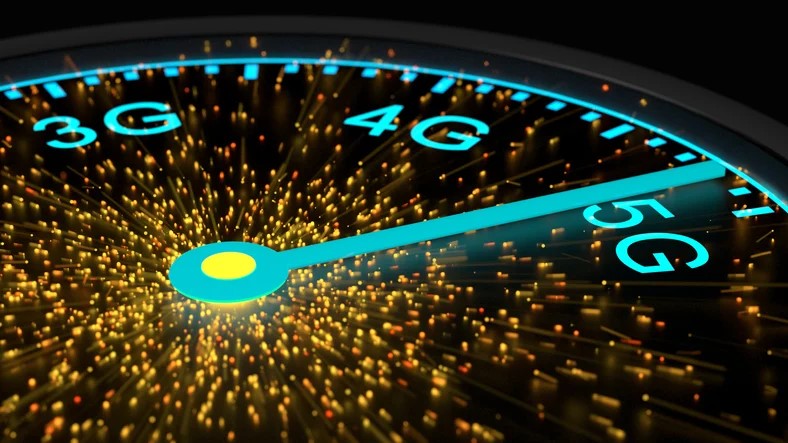Technology
What You Need to Know About Network Latency And Factors Affecting It

It’s crucial to understand the causes of network latency. If you have high or low network latency, there are a few causes you should look for. But first, what is latency? | Agora.io. Delay is another word for latency. In telecommunications, low latency is linked to good user experience (UX), whereas high latency is linked to bad UX. The term “latency” refers to the time it takes for a data packet to go between two specified points in computer networking.
Storage delays
The transmission mediums that a network uses affect network latency. Switching between different types of transmission media adds milliseconds to the transmission time of a single packet. The more data is sent between a client and server, the longer it takes for the communication to complete. Intermediary devices, such as routers, also add to the latency of a network. MAC address lookups and routing table lookups take time. Intermediate devices can also introduce storage delays.
Increasing the bandwidth available on a network is essential for smoothly operating services. However, latency increases when network elements are located far away. High latency can lead to a bottleneck in a network, preventing data from reaching its final destination. The additional packets are then sent through the wire, adding to the traffic on the network. It can be temporary or permanent. As a result, networks are often plagued with a high level of latency.
Distance between endpoints affects network latency.
Network latency depends on several factors, but distance is one of the most common. It is the distance between the origin and server of the request, including all intermediaries and their bottlenecks. For example, unoptimized websites, tracking cookies, inefficient hardware, and poor web hosting service can all contribute to high latencies. However, network latency can also be caused by other factors, including the speed of light.
Latency is the time it takes a packet or message to travel from one endpoint to the other. It is measured in milliseconds and is often referred to as ping. Lower ping rates indicate better performance. Optimal performance is within 30-40ms, and zero to low latency is ideal. Network admins try to get the lowest possible latency for internet applications while maintaining a high throughput.
Optical fibers
The first step in improving latency is to optimize the optical connection. The wavelength and type of fiber will affect the propagation delay. Single-mode optical fibers can achieve a latency of around 4.9 milliseconds. However, depending on the network requirements, this value can be higher or lower. In addition, the processing time for digital signals will also increase the latency. Digital signal processing (DSP) will remove critical optical impairments, adding extra latency of up to a hundred milliseconds.
Optical fibers will be increasingly important for 5G networks. The upcoming 5G networks will offer higher speeds and lower latency. But to provide these services, service providers will need more base stations. The frequency band for 5G is much higher than that of 4G, and the number of base stations will need to grow. Optical fibers must support multiwavelength multiplexing technologies while also being compatible with Ethernet standards.
Ethernet cable
There is a significant connection between Ethernet cable and network latency. Bad ethernet cables can cause latency. In addition, they cause errors and drop frames. Those errors are invisible but will eventually cause a drop in throughput. If your network uses Ethernet, keep a good cable in place, and test your connection using FCS error counters to see if there are errors. The cable is probably bad if the rate is more than .001%.
A 10-meter cable should be faster than a 20-meter cable. It is because the network package has to travel a shorter distance. A 20-meter cable should be faster than a ten-meter one. The difference between these two types of cables is negligible if you have the proper outdoors-rated cable. However, if you are connecting two computers, a hundred-foot cable should be sufficient to avoid latency issues.
-

 Press Release4 days ago
Press Release4 days agoClinical Trials Market Set for Robust Growth, Driven by Drug Development Surge and Digital Innovation
-

 Press Release7 days ago
Press Release7 days agoBellarium ($BEL) Price Prediction: Could It Hit $5 by 2026?
-

 Business6 days ago
Business6 days agoHow Managed IT Solutions Help Small Teams Compete at Enterprise Scale
-

 Press Release5 days ago
Press Release5 days agoIndustrial Boiler Market Expected to Surpass USD 24.4 Billion by 2035 Amid Growing Demand for Energy Efficiency and Industrialization
-

 Press Release5 days ago
Press Release5 days agoGreen Bio Chemicals Market Poised for Sustainable Growth amidst Global Shift to Eco-Friendly Alternatives by 2035
-

 Press Release5 days ago
Press Release5 days agoFill-Finish Pharmaceutical Contract Manufacturing Market Expected to Flourish Amid Biopharmaceutical Boom and Global Outsourcing Trend by 2035
-

 Press Release5 days ago
Press Release5 days agoPreventive Vaccines Market to Witness Strong Growth by 2035
-

 Press Release5 days ago
Press Release5 days agoPet Food Nutraceutical Market Set for Robust Expansion Amid Rising Demand for Pet Wellness by 2035










